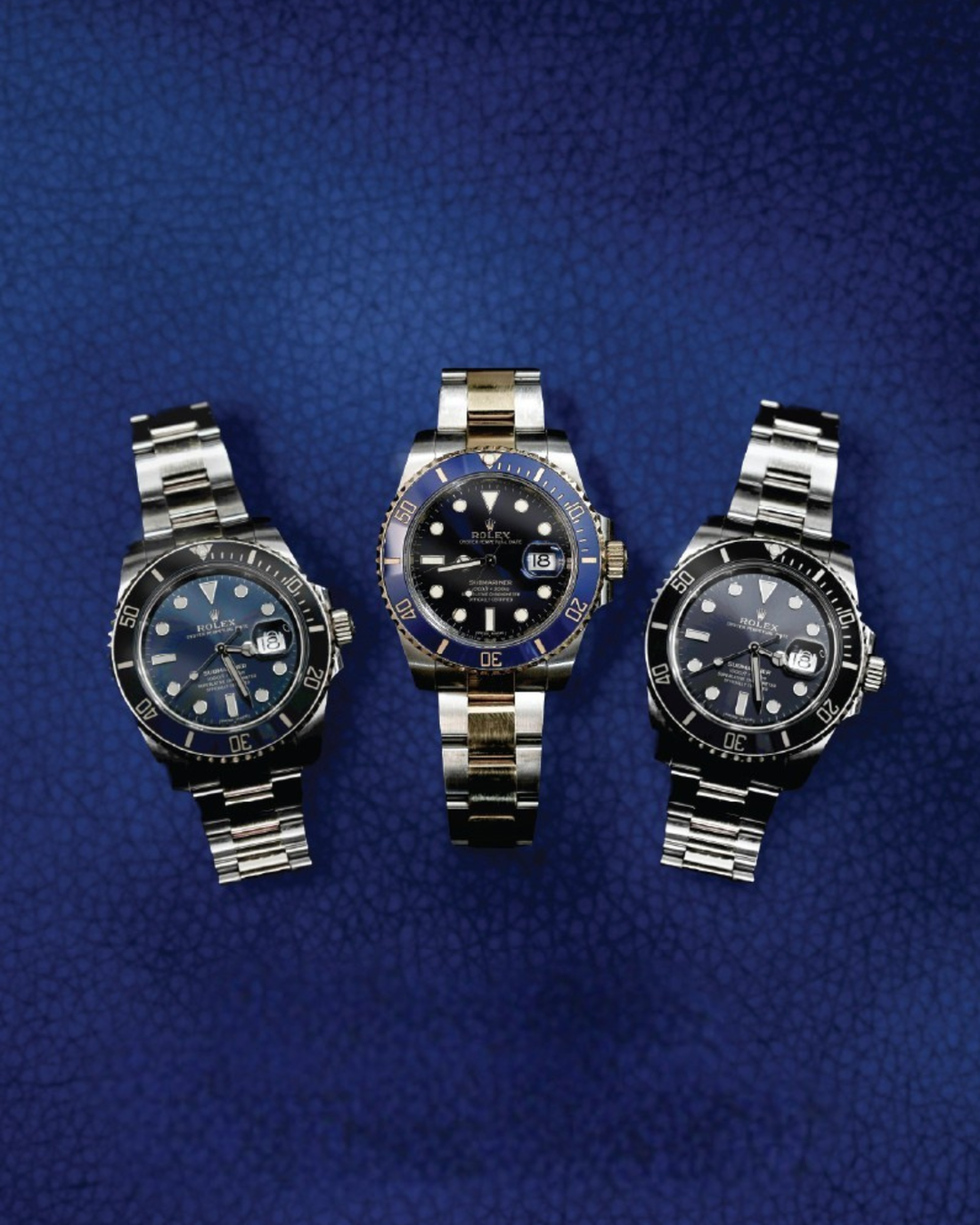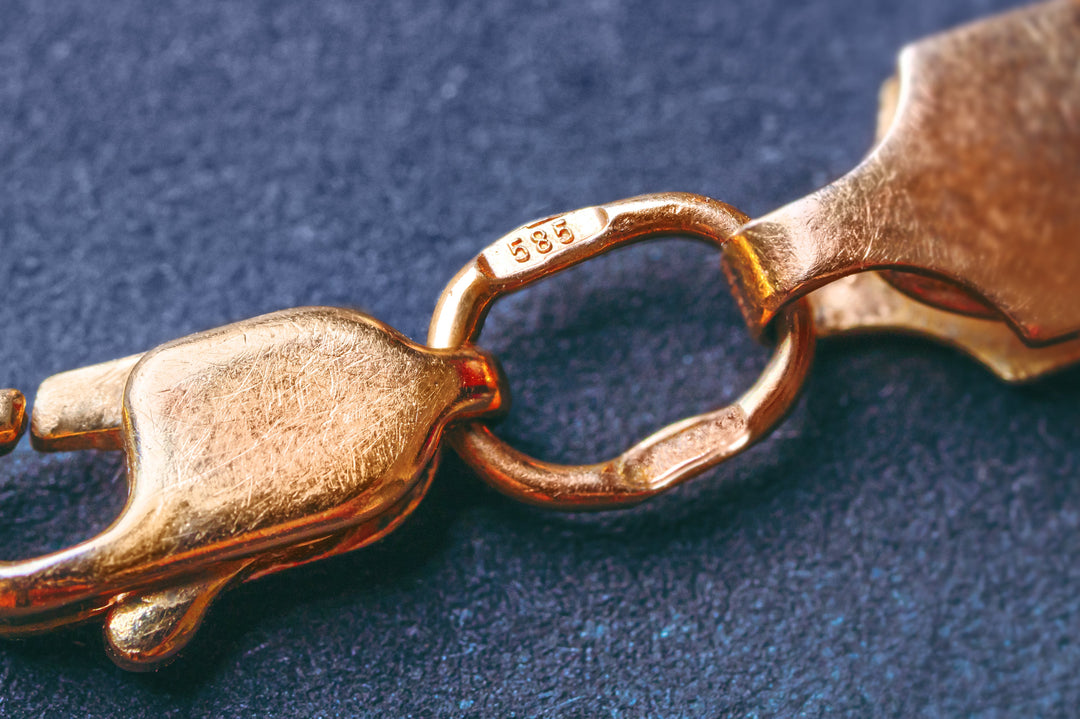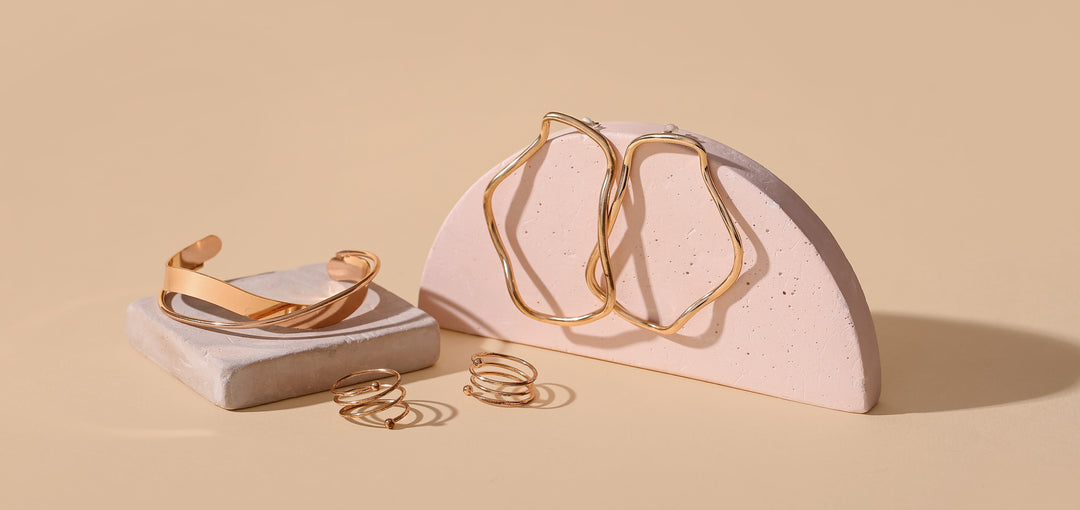Have you ever wondered about the sparkling gem that's uniquely tied to your birth month? Birthstones are more than just beautiful gems; they carry special meanings and connections to the month of your birth, with each stone believed to hold unique properties. These stones are cherished not just for their beauty but also for the significance they have in representing the characteristics of each month.
At Nelson Coleman Jewelers, we believe that understanding your birthstone is the first step in creating a meaningful, personal connection with your jewelry. Whether you're searching for the perfect gift or looking to treat yourself, knowing the significance behind these precious gems can make your choice all the more special. Here’s a deep look at each birthstone, its history, and the unique qualities that make it special, along with styling options for each stone.
January Birthstone: Garnet
Garnet, with its signature red hue, symbolizes protection and vitality. Historically, garnets were worn by warriors in battle as they were believed to protect the wearer from harm. This gemstone is also associated with lasting friendships and trust, making it a meaningful stone to celebrate those born in January. A fun fact about garnet is that its color plays the most critical role in determining its quality.
Garnets have been treasured for more than 5,000 years. One fascinating archaeological find includes a red garnet bead necklace discovered in an Egyptian grave, highlighting the gem's ancient use in personal adornment and burial rituals. This artifact dates back to around 3800 BC, emphasizing garnet's deep historical significance and long-standing appeal.
Colors: Garnet offers a rich palette of colors: greens, oranges, pinkish oranges, deeply saturated purplish reds, and even some blues.
Meaning: Protection, strength, and friendship.
Historical Significance: Garnets were favored by ancient travelers, who believed the stone could guide them home safely.
Styling Options: Garnet’s deep red shades, such as pyrope and almandine, are perfect for bold cocktail rings and pendants. Its vibrant range - green tsavorite, orange spessartine, and purplish-red rhodolite - offers endless creative potential. Whether paired with yellow or white metals, garnet shines in earrings, bracelets, or layered necklaces, adding elegance and warmth to any look.
February Birthstone: Amethyst
The beautiful purple amethyst has long been associated with royalty and luxury. In ancient Greece, amethyst was believed to protect against intoxication and was used as a symbol of clarity and sobriety. Today, it’s thought to calm the mind and bring balance to emotions, making it a fitting gemstone for the reflective month of February.
According to the Gemological Institute of America (GIA), “St. Valentine reportedly wore an amethyst ring engraved with Cupid’s image, linking the gem to love and romance.” Whether as a sentimental gift or a personal talisman, amethyst remains a powerful symbol of romance and inner peace - making it a popular choice in modern jewelry collections.
Colors: Shades range from deep purple to light lavender.
Meaning: Serenity, clarity, and balance.
Historical Significance: Amethysts were heavily favored by medieval European royalty, symbolizing wealth and power.
Styling Options: Amethyst's striking purple hue works well in both minimalist and statement jewelry pieces. It's stunning when paired with white gold or platinum to highlight its vibrant color. For an elegant look, consider amethyst earrings or a pendant necklace, while a bold amethyst ring can add a regal touch to evening attire.
March Birthstone: Aquamarine
Aquamarine is known for its soothing light blue color, reminiscent of the calm sea. Its name comes from the Latin word for seawater, and it has long been associated with sailors who believed it would protect them on long voyages. Aquamarine is thought to evoke feelings of peace, calm, and happiness, making it an ideal stone for those born in March.
The Gemological Institute of America (GIA) claims that “this March’s birthstone was also thought to enhance the happiness of marriages. The best gems combine high clarity with limpid transparency and blue to slightly greenish blue hues. Like many beryls, aquamarine forms large crystals suitable for sizable fashioned gems and carvings.”
Colors: Pale blue to deep teal.
Meaning: Calmness, clarity, and protection.
Historical Significance: Ancient mariners used aquamarine as a talisman for safe travels on stormy seas.
Styling Options: Aquamarine’s soft blue shade pairs perfectly with both casual and formal wear. Its serene color works well in delicate rings and drop earrings, particularly when set in white gold or platinum. Aquamarine also complements pastel-colored outfits, adding a fresh, ethereal vibe to your look.
April Birthstone: Diamond
The diamond is the birthstone for April, and it has long been regarded as a symbol of eternal love, strength, and resilience. Its incredible hardness and rarity make diamonds one of the most sought-after gemstones in the world. For centuries, diamonds have been associated with wealth, beauty, and eternal commitment.
Diamonds are renowned for being the hardest natural substance, formed deep in the Earth’s mantle over billions of years. Their resilience symbolizes enduring love, which makes them perfect for engagement rings and other sentimental jewelry. Beyond their physical beauty, diamonds are treasured for their brilliance, versatility, and emotional significance, making them timeless gifts and family heirlooms.
- Colors: While most people associate diamonds with being colorless, these colored diamonds are called "fancy diamonds" and are highly valued for their rarity.
- Meaning: Strength, love, and purity.
- Historical Significance: Diamonds were often believed to hold healing properties in ancient India, and warriors wore diamonds as talismans in battle.
- Styling Options: Diamonds are timeless and versatile, making them ideal for any piece of jewelry. Whether set in classic solitaire rings, chandelier earrings, or tennis bracelets, diamonds can elevate any outfit. For a unique twist, opt for colored diamonds or incorporate diamonds into layered jewelry looks.
May Birthstone: Emerald
Emeralds have been cherished for thousands of years, especially by ancient civilizations such as the Egyptians and Romans. The lush green color of the emerald is a symbol of rebirth, love, and fertility, making it an ideal stone for the vibrant month of May. Its unique color symbolizes nature and renewal.
Cleopatra famously adored emeralds, with some of the earliest mines traced back to ancient Egypt around 3500 BC. In jewelry, emeralds are celebrated for their vibrant green color and characteristic inclusions, known as "jardin" or garden, which add a unique, organic charm to each stone. These natural features make emeralds highly valued for their individuality, often sought for elegant rings, necklaces, and statement pieces.
- Colors: High-quality emeralds display a rich, deep green color, and some can have subtle blue undertones due to the presence of trace elements like chromium and vanadium.
- Meaning: Growth, renewal, and love.
- Historical Significance: Cleopatra, the famous Egyptian queen, was known to favor emeralds and incorporated them into her royal adornments.
- Styling Options: Emeralds pair beautifully with gold, creating a striking contrast that emphasizes the stone’s natural vibrancy. For a luxurious look, emerald pendants or eternity rings offer timeless appeal, while emerald earrings or bracelets can add a pop of color to more understated outfits.
June Birthstone: Pearl, Moonstone, and Alexandrite
June is one of the few months with three birthstones: pearl, moonstone, and alexandrite. Each of these gemstones has its own beauty and meaning. Pearls, with their classical beauty, represent purity and knowledge. Alexandrite, known for its color-changing qualities, represents creativity and joy. Moonstones, identified for their dark shine, symbolize intuition and emotional harmony.
According to the Gemological Institute of America (GIA), pearls - both natural and cultured - are some of the most beloved gems, known for their variety of colors beyond the familiar white and cream. Natural pearls form around tiny irritants inside mollusks, while cultured pearls result from inserting a bead or tissue that becomes coated with nacre.
Alexandrite, famed for its dramatic color shift from green in daylight to red under artificial light, was first discovered in Russia’s Ural Mountains in the 1830s. Today, it’s also found in Sri Lanka, East Africa, and Brazil, though fine-quality alexandrite remains extremely rare and valuable.
Lastly, moonstone, part of the feldspar family, exhibits adularescence - a glowing, billowing light effect- created by layers of orthoclase and albite scattering light. Other feldspar minerals like labradorite and sanidine can also display this captivating optical effect.
- Pearl: Known for its natural beauty and timeless appeal, pearls are symbols of purity, wisdom, and calm. They are versatile enough to be worn as classic pearl studs, layered necklaces, or elegant bracelets.
- Alexandrite: Its color-changing properties make alexandrite a unique and eye-catching option. Best showcased in rings or earrings, alexandrite’s dual colors create a mesmerizing effect, especially in low light.
- Moonstone: With its mystical glow, moonstone is often used in bohemian or vintage-inspired jewelry. It pairs beautifully with rose gold and makes a subtle, sophisticated statement in rings or pendants.
July Birthstone: Ruby
Ruby, with its intense red color, is the birthstone for July. This vibrant gemstone has long been associated with passion, love, and protection. Ancient cultures believed rubies held the power to protect their owners from harm and were often worn by royalty.
The Gemological Institute of America (GIA) claims that “as the “king of gems,” rubies have long symbolized passion and prosperity. Their deep red hue, owed to chromium, makes them one of the most coveted gemstones, often fetching high per-carat prices. Myanmar’s Mogok region is famous for producing some of the finest rubies.”
- Colors: Rubies belong to the corundum mineral family, and their color is due to chromium. The highest quality rubies are a vivid, pure red, often referred to as "pigeon's blood." Some rubies may display secondary hues like purple.
- Meaning: Passion, protection, and vitality.
- Historical Significance: Rubies were often buried beneath the foundation of buildings to ensure good fortune and safety.
- Styling Options: The rich, bold color of rubies makes them perfect for standout pieces like cocktail rings or statement necklaces. Pair ruby jewelry with black or gold to create a striking, dramatic look, or choose delicate ruby earrings for a touch of everyday luxury.
August Birthstone: Peridot
Peridot, the August birthstone, is celebrated for its vibrant green color and symbolic ties to strength, positivity, and protection. This gemstone adds significance to jewelry worn by those born in August, symbolizing renewal and prosperity.
Peridot, known for its vibrant green color, forms deep within the Earth's mantle and occasionally arrives on Earth via meteorites, adding a cosmic element to its allure. Ancient Egyptians revered the gem, mining it on the island of Zabargad and calling it the “gem of the sun” for its radiant beauty.
- Colors: The intensity and hue of its color depend on the amount of iron present in the gemstone.
- Meaning: Strength, protection, and prosperity.
- Historical Significance: Peridot was often used by the ancient Egyptians, who called it the "gem of the sun."
- Styling Options: Peridot’s vibrant color works well in playful, modern jewelry designs. Pair it with silver or white gold for a clean, fresh look, or mix it with other colorful gemstones in layered necklaces or bracelets for a bohemian style.
September Birthstone: Blue Sapphire
Sapphires, the birthstones for September, are best known for their brilliant blue hue but also occur in nearly every color. Symbolizing wisdom, truth, and purity, these gems have been cherished by royalty and religious figures throughout history. A famous example of sapphire’s royal appeal is the world-renowned engagement ring worn by both Princess Diana and Kate Middleton, featuring a stunning royal blue sapphire. Sapphires’ versatility and enduring beauty make them ideal for meaningful gifts and elegant jewelry.
According to the Gemological Institute of America (GIA), beyond blue sapphire and ruby, the corundum family includes “fancy sapphires” in colors like violet, green, yellow, orange, and pink. Some exhibit a striking color-change effect, shifting from blue in daylight to purple under incandescent light, with other varieties appearing in gray, black, or brown.
- Colors: Sapphires can be found in pink, yellow, green, purple, orange, and even colorless varieties. The blue hue is due to the presence of iron and titanium, while other trace elements cause variations in color.
- Meaning: Wisdom, loyalty, and protection.
- Historical Significance: Sapphires were believed to protect against envy and harm and were often worn by priests and royalty.
- Styling Options: Sapphires exude elegance and sophistication, making them perfect for both formal and casual settings. Pair sapphire drop earrings with an evening gown for a refined look, or wear a sapphire ring for a subtle touch of luxury.
October Birthstone: Opal and Tourmaline
October-born individuals can choose between two stunning birthstones: opal and tourmaline. Opals, with their dazzling play of color, represent optimism and inventiveness, while tourmalines are prized for their wide colors and the joy and protection they are thought to provide.
Opals captivate with their shifting colors, revealing brilliant flashes of red, green, and blue as they catch the light. Each opal is unique, making them a favorite for jewelry lovers seeking one-of-a-kind pieces. They add enchantment to rings, pendants, and earrings. Australia produces over 90% of the world’s opals, including the rare black opals found only in Lightning Ridge!
Tourmaline is a captivating gemstone celebrated for its remarkable range of colors, from vivid pinks and greens to striking blues and deep reds. Its unique ability to display multiple colors within a single stone makes it ideal for bold statement pieces and intricate designs. Tourmaline can become electrically charged when heated or rubbed, attracting dust and small particles - a trait that earned it the nickname "The Ceylon Magnet."
- Opal: Known for its iridescent play of colors, opals add a touch of magic to any outfit. They shine in statement rings or pendants, perfect for adding color to neutral attire.
- Tourmaline: Available in a wide range of colors, tourmaline can be styled in both classic and contemporary designs. Its versatility makes it ideal for earrings, bracelets, or multi-gemstone rings.
November Birthstone: Citrine and Topaz
Those born in November can enjoy the warm hues of topaz and citrine. Topaz comes in a rainbow of colors; citrine is prized for its charming yellow and orange hues. Both November birthstones are known to have calming energies while bringing fortune and warmth to the wearer.
According to the Gemological Institute of America (GIA), topaz is a versatile gemstone known for its wide color range, including brown, blue, green, yellow, orange, red, pink, and purple. Colorless topaz, which is abundant, is often treated to produce popular blue shades. A unique feature of topaz is its pleochroism, meaning it can display different colors depending on the viewing angle and crystal direction. With a hardness of 8 on the Mohs scale, topaz is durable but requires care to avoid cleavage under impact.
Citrine, a golden-yellow quartz, symbolizes prosperity and success, earning it the nickname "merchant's stone." Its vibrant hues, from pale yellow to deep amber, come from traces of iron, though most citrine on the market is heat-treated amethyst or smoky quartz. It’s durable enough for everyday wear, making it a popular choice for rings, pendants, and earrings.
- Topaz: Whether in blue, yellow, or pink shades, topaz adds elegance to any jewelry piece. Wear it as a pendant or cocktail ring for a pop of color.
- Citrine: Citrine’s sunny color is perfect for adding warmth to fall or winter outfits. It pairs beautifully with yellow gold and can be worn in dainty necklaces or bold earrings.
December Birthstone: Turquoise, Zircon, and Tanzanite
December’s birthstones - turquoise, zircon, and tanzanite - radiate beautiful shades of blue. These gems are associated with qualities like guidance, strength, and wisdom, making them meaningful gifts that blend elegance with symbolism.
Some fascinating insights about these stones come from the Gemological Institute of America (GIA).
Turquoise is found in only a few places on Earth, typically in arid, barren regions where copper-rich, acidic groundwater seeps into the ground and interacts with phosphorus- and aluminum-bearing minerals. This natural sedimentary process forms a porous, semitranslucent to opaque gemstone composed of hydrated copper and aluminum phosphate.
Colorless zircon dazzles with brilliance and fiery flashes, often mistaken for diamonds due to their similar properties. Available in vibrant hues like yellow, green, red, brown, and blue, zircon is a favorite among collectors and savvy shoppers alike for its beauty, versatility, and diamond-like sparkle.
Tanzanite, a captivating blue-violet variety of zoisite, was first discovered in 1967 in Tanzania and named by Tiffany & Co. in honor of its origin. This unique gemstone displays pleochroism, meaning its color shifts depending on the viewing angle. This remarkable color-changing quality and its rarity make tanzanite a sought-after choice for fine jewelry collectors.
- Turquoise: Turquoise’s bold blue-green color makes it ideal for statement rings or boho-inspired bracelets. It pairs beautifully with both silver and gold.
- Zircon: Zircon’s brilliant sparkle mimics that of diamonds, making it perfect for intricate settings in rings or earrings.
- Tanzanite: Tanzanite’s deep blue-violet hue works well in minimalist settings like stud earrings or a solitaire necklace, adding a pop of color to any ensemble.
At Nelson Coleman Jewelers, we offer a beautiful selection of birthstone jewelry that honors the unique qualities of each gemstone. Whether you’re buying for yourself or looking for the perfect birthday or anniversary gift, birthstones provide a meaningful way to celebrate individual identity and milestones. Let us guide you through the world of birthstones, where you can find elegance, beauty, and a personal connection with a gemstone that’s cherished for life. Each birthstone tells a story - one that is waiting to become part of yours.

















